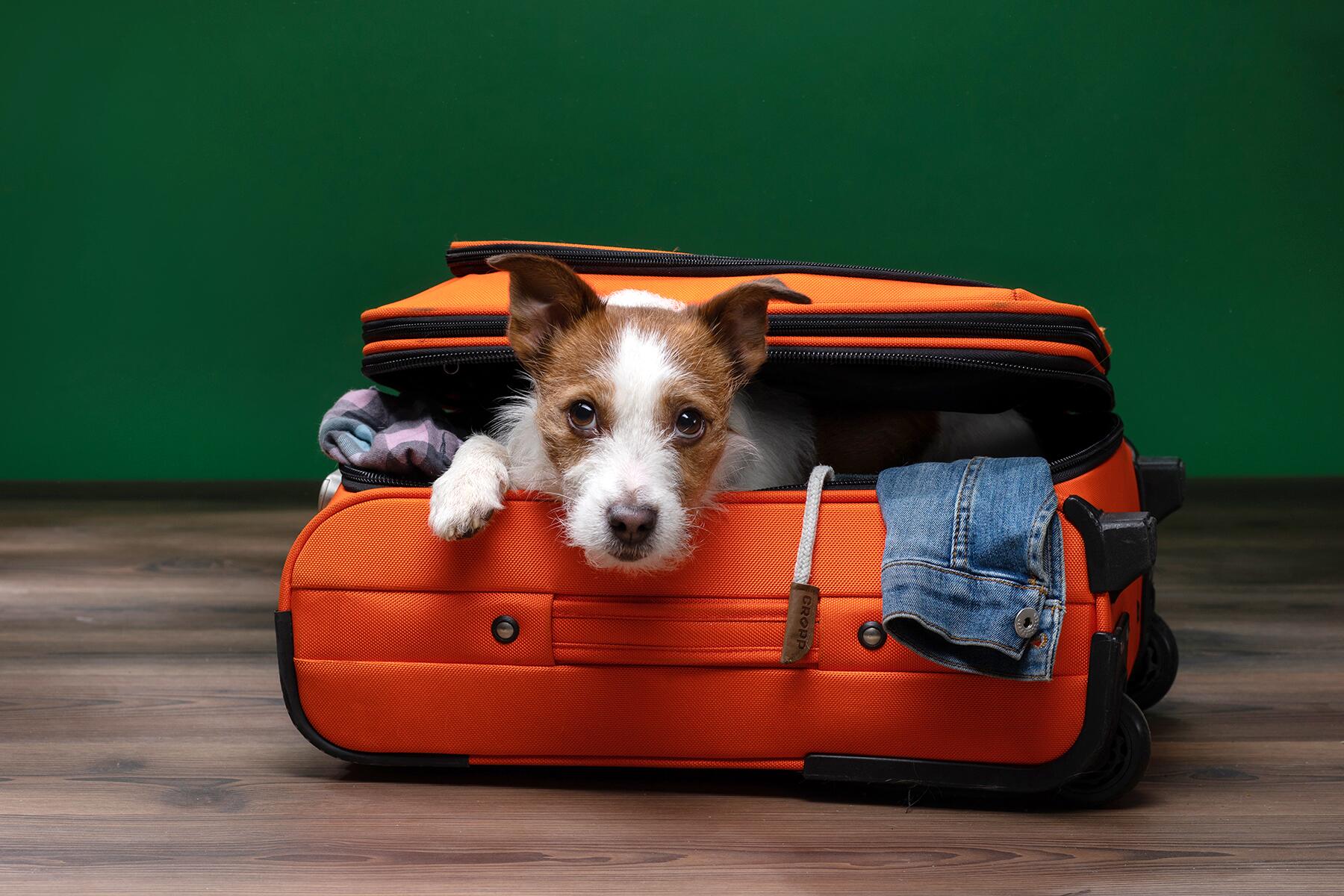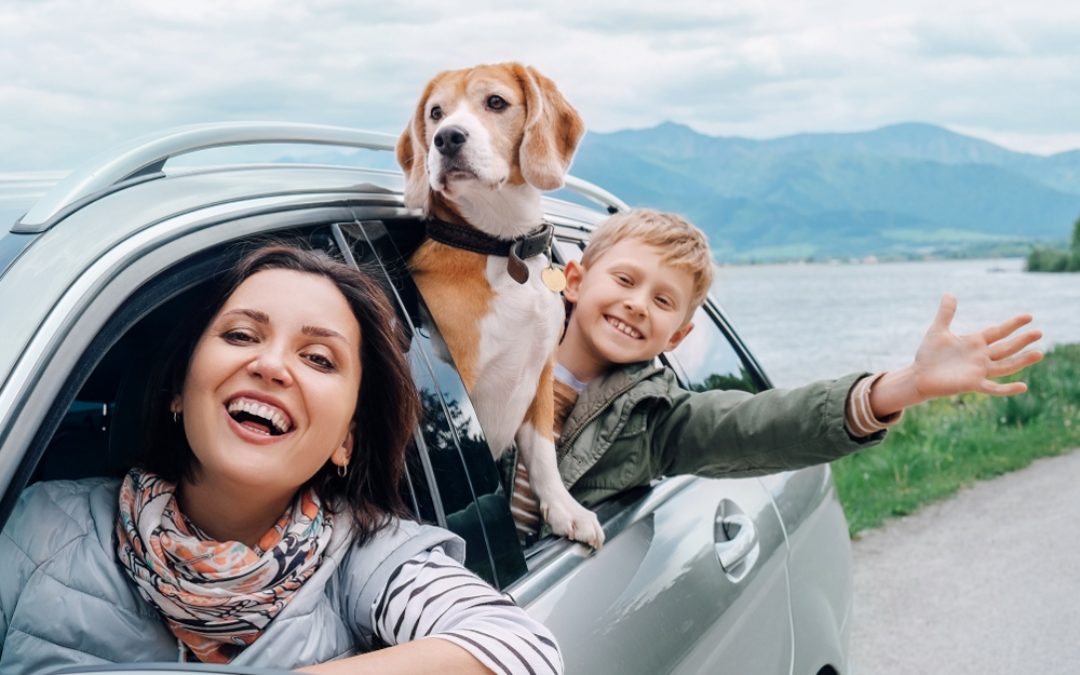Embarking on a journey with your dog or cat transforms an ordinary trip into a shared adventure, deepening your bond and filling your travels with memorable moments; yet, the logistical and safety complexities of pet travel are significant, requiring meticulous planning and preparation.
Whether you’re planning a simple weekend road trip or coordinating complicated international air travel, the process is fraught with potential challenges, from managing a pet’s debilitating motion sickness and anxiety to navigating restrictive airline cargo rules and strict governmental quarantine documentation.
Responsible pet travel is fundamentally built upon safety, comfort, and compliance, ensuring that your beloved companion is not only allowed at your destination but also remains secure and stress-free throughout the entire experience.
This guide will walk you through the essential preparation steps, the must-have safety gear for car rides, effective strategies for minimizing travel-related stress, and the critical documentation necessary for crossing borders, ensuring your pet remains healthy and happy from departure to arrival.
Mandatory Pre-Travel Preparation

Successful pet travel relies heavily on proactive planning, especially concerning identification, health, and destination compliance.
A. Health and Veterinary Compliance
- A. Schedule a comprehensive veterinary check-up well in advance of your departure, especially for long or international trips.
- B. Ensure all vaccinations, particularly Rabies, are current and that you carry official Proof of Vaccination.
- C. Obtain a Certificate of Veterinary Inspection (Health Certificate), which may be required for crossing state or international borders, confirming your pet is fit for travel.
- D. Be aware that the timing of the health certificate is crucial, often required to be issued by a veterinarian within 10 days of travel, and endorsed by a government agency (like the USDA) for international flights.
- E. Discuss motion sickness, anxiety medication, or calming supplements with your vet well before the trip to test effectiveness and dosage.
B. Identification and Documentation
- A. Ensure your pet is properly identified with a secure collar and an ID tag listing your current cell phone number and travel location.
- B. Confirm that your pet’s microchip is registered, functioning correctly, and that all contact information is entirely up-to-date.
- C. For international travel, verify that your pet’s microchip meets the required ISO standards for the destination country.
- D. Carry a current, clear photo of your pet with you at all times, which is critical for swift identification if they become lost during transit.
- E. Research and secure any necessary Import Permits or quarantine pre-approvals required by your destination country, as these processes can take weeks or months.
C. Acclimation and Conditioning
- A. Start familiarizing your pet with their carrier or crate well in advance, making it a positive space by feeding meals or giving high-value treats inside.
- B. Practice short car rides, starting with brief trips to fun locations (like a park) to build a positive association with the vehicle.
- C. When conditioning for the carrier, gradually increase the duration the door remains closed while the pet is inside, rewarding calmness throughout.
- D. This desensitization process is vital for reducing generalized travel anxiety and preventing panic or destructive behavior.
Road Trip Safety and Comfort

Car travel is the most common form of pet transport, but it carries serious safety risks if pets are not properly restrained.
A. Mandatory Restraint
- A. Never allow your pet to roam loose in the car, ride unrestrained in the front seat, or stick their head out the window, which risks severe injury from airbags, sudden stops, or debris.
- B. The safest method is securing the pet in a crash-tested carrier or crate placed in the back seat or cargo area.
- C. Alternatively, use a crash-tested seatbelt harness that attaches directly to the car’s seatbelt system, preventing the pet from becoming a projectile during an accident.
- D. Always secure the carrier itself, ensuring it is braced against the seat or tied down so it cannot shift or slide during abrupt braking.
B. Managing Motion Sickness and Anxiety
- A. Withhold food for 4 to 8 hours before a long car trip to minimize the risk of vomiting, though fresh water should be offered frequently.
- B. Keep the car environment cool, quiet, and well-ventilated, as heat and loud noise exacerbate nausea and anxiety.
- C. Place small dogs or carriers on the floor of the back seat, which is typically the area of the car with the least amount of motion.
- D. Provide familiar comfort items, such as a favorite blanket or a worn shirt with your scent, to help soothe travel anxiety.
- E. Use anti-nausea or anti-anxiety medications (prescribed by a vet) if conditioning and environmental controls are insufficient.
C. Breaks and Logistics
- A. Plan to stop every two to four hours during long drives to allow dogs to stretch their legs and relieve themselves.
- B. Always keep your dog leashed during rest stops and potty breaks to prevent accidental escape in unfamiliar territory.
- C. Never leave a pet unattended in a parked car, as temperatures can rise rapidly to fatal levels, even on a mildly warm day, and your pet risks theft.
- D. Pack plenty of fresh drinking water from home, as changes in water quality can sometimes cause digestive upset.
Air Travel Essentials
Flying with a pet—whether in the cabin or as cargo—is a complex process governed by strict regulations and requires extreme attention to detail.
A. Cabin vs. Cargo
- A. Small dogs and cats that meet weight and size restrictions can often travel in the cabin under the seat in front of you, which is the least stressful option.
- B. Check airline specific weight, size, and breed restrictions long before booking your flight, as these rules vary widely.
- C. Larger pets must travel in the cargo hold, which should be avoided if possible, especially during extreme temperature months, due to increased stress and risk.
- D. When booking, choose direct flights to minimize handling and layover stress, and select flight times (early morning or late evening) with moderate temperatures.
B. Crate and Comfort Requirements
- A. The pet’s travel crate must meet IATA (International Air Transport Association) standards for structure, ventilation, and size, allowing the pet to stand, sit, and turn around naturally.
- B. Secure identification tags and “Live Animal” signage must be prominently displayed on the outside of the crate.
- C. Attach empty food and water dishes to the inside of the crate door, easily accessible for airline staff to replenish during long waits.
- D. Line the crate floor with absorbent bedding (like shredded paper or puppy pads) to manage potential accidents.
C. Departure Day Protocol
- A. Avoid feeding your pet any large meals 4 to 6 hours before check-in to prevent air-sickness and cage soiling.
- B. Provide only small amounts of water or ice cubes leading up to the flight to ensure hydration without overfilling the bladder.
- C. Do not use over-the-counter sedatives without strict veterinary instruction, as these drugs can interfere with the pet’s ability to regulate body temperature and balance during flight.
- D. Exercise your dog thoroughly before leaving for the airport to help them relax and sleep during the journey.
The Ultimate Travel Kit Checklist
Packing the right supplies ensures you are prepared for every contingency, keeping your pet healthy and maintaining your routine away from home.
A. Health and Hygiene Kit
- A. Prescribed Medications for the entire duration of the trip, plus a few extra days, are a must.
- B. A basic Pet First Aid Kit containing antiseptic wipes, gauze, tweezers (for ticks), and styptic powder is necessary for minor emergencies.
- C. Plenty of Waste Bags for dogs and a small, temporary litter box and scooper for cats.
- D. Grooming Wipes or a travel brush for quick cleanups after messy potty breaks.
B. Routine and Comfort Items
- A. Sufficient Food for the entire trip, preferably kept in airtight containers, as sudden diet changes cause severe digestive upset.
- B. Familiar Blanket or Bedding to provide the comforting scent of home in strange environments.
- C. Favorite Toys and Chews for comfort and mental distraction during long stretches of confinement.
- D. Collapsible Food and Water Bowls for easy use during rest stops and at your destination.
C. Documentation Portfolio
- A. Original and copies of the Health Certificate (CVI) and Rabies Vaccination Certificate.
- B. Detailed contact information for your Home Veterinarian and the nearest Emergency Veterinary Clinic at your destination.
- C. Proof of microchip registration and ownership.
- D. Any Import Permits, Titer Test results, or necessary official forms required by the airline or country.
Conclusion
Traveling with a pet, while ultimately rewarding, is a process demanding exhaustive foresight and preparation to mitigate the numerous variables involved.
The safety of your companion during transport is non-negotiable, requiring the use of crash-tested restraints in cars to prevent serious injury during sudden braking or collisions.
Proactive health measures, including securing up-to-date vaccination records and a valid health certificate, are essential steps for legal entry into new states or countries.
Thorough acclimation training to the carrier or crate is necessary, reducing anxiety and preventing panic-driven destructive behaviors that can endanger your pet.
Owners must meticulously manage the risks of motion sickness and cumulative stress by limiting pre-travel feeding and scheduling frequent rest and hydration breaks.
For air travel, careful adherence to stringent IATA regulations and specific airline size and breed restrictions is vital to ensure your pet is accepted for the flight.
By compiling a complete travel kit that includes necessary medication, comforting familiar items, and required documentation, you ensure compliance and minimize disruption to your pet’s routine.
Ultimately, successful pet travel is a testament to the owner’s devotion, creating a safe, calm, and positive adventure for both human and animal.











